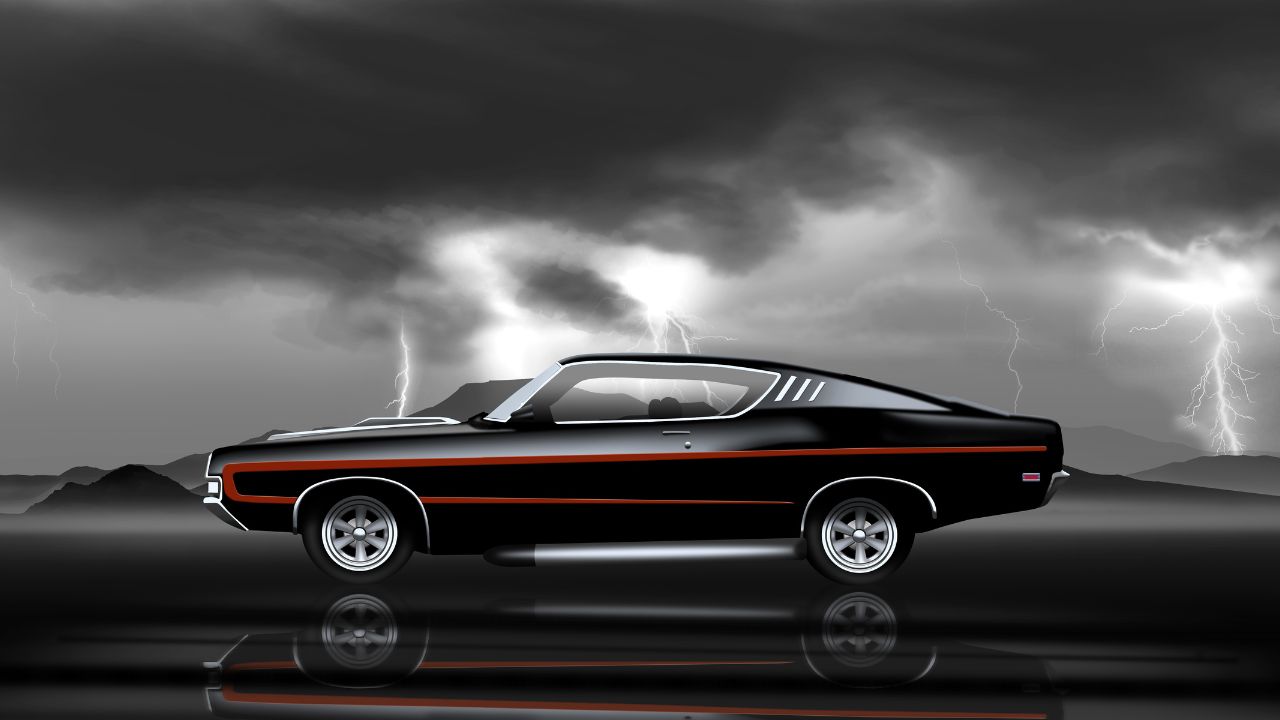
There is no doubt that the Ford Mustang has gone through more changes than Dolly Parton, Michael Jackson and others when it comes cars. The top 10 Mustangs are not necessarily in order, and the list doesn't include Grandes, V6s, EcoBoosts, or any other type of new Mustang. These Mustangs represent the very best Ford Mustangs. These cars reflect the Ford Mustang's history, present, as well as future.
The Mustang first-gen
The Ford Mustang, the first-generation of which was introduced in 1960, is a well-known car that has a long history. It was affordable, agile and affordable when it was first introduced in mid-1960s. That made it a popular car with a lot of fans. The car is a beloved classic and a huge hit. Unlike earlier Mustangs, the first-gen was designed by Gale Halderman, and the result is one of the most famous cars in the entire Mustang family.
The first generation of the Ford Mustang had a foxbody. This body design was Ford's most beloved for a decade. In addition, it was the fastest car its class. The production of the Ford Mustang began in August 1978. It featured a new front suspension, various I-4 engines and was made available with the pushrod 5.0 V8 engine in 1979. Among Mustang enthusiasts, Fox Body engines were preferred over other versions because of their lighter weight and nimble design.

The Shelby GT350R
The GT350R Shelby model is the latest. It has a flat-plane V8 motor and a specially tuned suspension that features revised spring rates, antirollbars and a lower ride height. This car has a flat-plane crankshaft as well as a completely new rear suspension. Its 5.2-liter, super-powerful engine will produce more than 500 horsepower and 400 pounds-feet. It will feature a carbon-fiber body with red pin stripes.
Ford Performance engineers set out to build a car that was powerful, composed, and communicates at all costs. Ford Performance engineers wanted a GT350R race car. The flat-plane engine produces 526 horsepower. It also boasts one the broadest torque bands of any automotive engine. The GT350R's six-speed Tremec transmission is coupled to a mechanical limit-slip differential.
The California Special
The interior of the Mustang California Special is especially stylish, with heated front seats and red seams throughout. The instrument panel is made of carbon hex aluminum and is stamped with GT/CS logos. It has a black trim and red contrast stitches. There's also an interior accent panel in red. The car's body can be finished in many colors, including California Special red.
The California Special looks a lot like the original 1968 model. It features a black cloth roof, GT/CS badge, Honeycomb Grille, and optional side-air scoops. Carbonised Grey 19 inch wheels, a faux filleder cap, quad tailpipes and California Special decals along the roof are some other features. The interior also features an eight-speaker stereo and leather upholstery.

The 2019 Shelby Super Snake
The Shelby Super Snake 2019 is a hot rod, introduced originally by Shelby American in 1962. This car is powered by a Ford 5.0L V8 Supercharged Ford 5.0L engine that produces 8100 horsepower. It can reach speeds of 0-60 mph within three seconds. It's all new suspension, brakes, wheels, and tires make it a pleasure to drive. Shelby Super Snake can be ordered with either standard or widebody suspension. It also comes with performance tires, an optional widebody, and other options.
The Shelby Super Snake's 825 horsepower engine is mated with a 10-speed automatic transmission, and a polished Whipple Supercharger. It also features a Shelby-tuned intake system and a transmission cooler. All this power is sent to a transmission cooler, and to a limited-slip diff. Shelby Super Snake is the Mustang's first Mustang to offer this kind of performance.
FAQ
What is the average time it takes to become a mechanic?
A mechanic is only an expert if they have years of experience. The best way to learn how to repair cars is by working under the supervision of a professional mechanic.
You will be required to spend time at a car garage learning as much as you can about cars. You will need to read books on mechanical engineering and car design.
Additionally, you will need to attend an auto school.
It is important to get started early. To learn about automotive technology, don't wait to be older. Start studying automotive technology now to become a mechanic.
What are the qualifications for an automotive technician
High school graduation or GED is required with excellent grades in English and math. Also, you must be able read and write. After passing a written test, you will need to complete a series of practical tests before you are allowed to begin working.
What kind of car mechanic jobs exists?
For car mechanics, there are three main areas for employment:
-
Automotive repair shops
-
Dealerships
-
Independent garages
Automotive repair shops
Most people think of this as the first step to becoming a mechanic. In fact, it's probably the easiest way to get started. Either work for someone else's shop or you can start your own.
If you are interested in working at a shop you will need to apply for membership to a union. Once you're accepted into the union, you'll receive training from the union.
After the training, you will be ready to go and start your job.
Registering with the government is required if you intend to open a garage. You'll need to meet certain standards after you register.
Once you register, you'll receive a license that allows you to operate your garage.
Your license allows for minor repairs and spare parts sales. It won't permit you to fix serious engine problems.
Customers will expect you to not only sell spare parts but also provide advice and guidance.
Dealership jobs
Most dealerships employ mechanics who can specialize in a particular area of the car. For example, they might only deal with brakes or only replace tires.
However, some dealerships also hire general mechanics who can handle all aspects of car repairs.
These positions often require applicants to undergo specific training before being allowed to work. This allows employers to pick the right candidates for their jobs.
Some dealerships recruit students right out of school. These graduates are already familiar with basic mechanics and can therefore learn about cars.
Independent garages
Independent garages are not associated with any one dealership. Instead, they tend to focus on providing high-quality service.
Independent garages are not associated with any companies so they can afford higher wages. Because these jobs don't have to be associated with any company, they can generally offer better wages than dealerships.
However, independent garages do not necessarily offer better workplaces. Many owners prefer to run their businesses themselves rather than delegate responsibility to employees.
You may find yourself working for long hours and not having control over the day.
Expect to earn lower salaries than if you were working in a dealership.
The good news is that you can easily switch between different kinds of jobs. Ask your employer if you would like to work as a mechanic at a dealership.
You could also apply directly to an owner of a garage if that's what you want.
The bad news is that finding a new job isn't always easy. There are many other factors that can influence your earnings.
It could be the type and cost of labor you use to repair your vehicle.
How can I prepare to become a mechanic apprentice?
It is important to have an understanding of what you are going into. You must understand the workings of cars. This will allow you to be prepared for your first day at work.
You will also need to learn how to fix simple problems like tires and broken lights.
These lessons will help you to identify and fix problems.
It is also important to know how the different pieces fit together in order to put them together again.
Finally, it is important to know how tools can be used safely and efficiently.
All of these factors will allow you to become a skilled mechanic.
What qualifications do you need to be a truck-mechanic?
This job requires you to be a skilled mechanic, although you do not need any formal training. Your experience is valuable because it allows you to diagnose problems quickly, efficiently and effectively.
Also, your knowledge of diesel technology will be a benefit as you can help us understand which parts are needed for our vehicles.
Does it matter where I go to college?
Non, really. There are no differences between colleges when it comes to getting into the automotive industry. There are some schools that offer more specific programs than others.
Statistics
- 52% of Mechanics in the United States think their salaries are enough for the cost of living in their area. (indeed.com)
- The U.S. Bureau of Labor Statistics (BLS) reports that the job outlook for automotive service technicians and mechanics is expected to decline by 4% from 2019 to 2029. (indeed.com)
- According to the BLS, the median annual salary for automotive service technicians and mechanics in the United States was $44,050 in May 2020. (uti.edu)
External Links
How To
How to diagnose your vehicle properly for repair
You should first examine the symptoms your car is showing to determine if it requires repairs. Next, you can follow these steps in order to diagnose your car.
-
Check engine lights. You should inspect the dashboard lights, such as the engine light indicator and the oil pressure gauge. Also, check the battery light indicator. If they have been flashing for more days than usual, it could be a sign that something is wrong with the vehicle.
-
Inspect the tire treads. Tires with worn treads could cause problems when handling or braking. You should inspect the treads on your wheel. They should look clean and be smooth. To do this, remove the wheels and take them out. Check the tread condition with a flashlight.
-
Pay attention to the level of your brake fluid. It is important to keep track of how much brake fluid you have in your car. This ensures that your brakes work properly. Your brakes may fail if the brake fluid level drops.
-
Make sure to test the suspension system. Vehicles usually have a suspension system that helps absorb shocks and vibrations while driving. It allows for better control, smooth acceleration, and deceleration. It might feel uncontrollable or wobbly if your vehicle is suffering from a suspension problem. If you are unsure if your vehicle is suffering from a suspension problem, put weight on the front and rear axles to check the movement.
-
Take a look at the steering column. The steering column connects the steering wheel to all other components of the vehicle. Accidents often damage steering columns. If yours feels loose or shaky, you should replace it.
-
Pay attention to the exhaust pipe. Exhaust pipes move gases from combustion chamber to atmosphere. Exhaust pipes that are cracked or leaking can allow harmful fumes to enter your cabin. If your tailpipe bends, it is important to fix it immediately.
-
Take a look under your hood. Look underneath your hood to see if anything looks strange. Your engine could be leaking fluids. A professional technician should be contacted if your engine compartment emits an unusual smell.
-
Make sure to check the air filter. The outside environment collects dust and other particles in the vehicle's filter. Vehicles that have a dirty air filter will not run well. Replace your air filter regularly.
-
Check the fan belt. Your vehicle's fan belt connects the engine to the transmission. If the fan belt is damaged, the engine won’t turn. It's easy to replace the belt. You will need a screwdriver, pliers and a pair of pliers.
-
Check the radiator hose and hoses. The radiator-hose carries water to the engine. If the hose becomes damaged or cracked, hot liquid can be emitted onto the engine. To repair the leaky hose, all you need is a pair if needle-nosepliers.
-
Make sure you have the windshield wipers checked. Windshield wipers work by using electricity to remove rain and snow. If they stop functioning, they can leave streaks in your window glass. Change the washer fluid to fix the problem.
-
Check the battery cables. The batteries provide power to the electrical systems within your car. Make sure you disconnect the negative cable before replacing batteries. Failure to do so can damage your alternator.
-
Pay attention to your headlights. Headlights illuminate the road ahead of you. They can make it difficult to see if they stop working. You can check the bulbs to make sure they aren't burned out.
-
Check the lights. When you approach them at night, the lights warn other drivers. It could cause distraction and even lead to an accident if it doesn't work.
-
Check your brakes. Before you collide with another vehicle, brakes will slow down the car. You may lose control of your vehicle and crash if the brakes don't function properly.
-
Change the oil. Keep your engine lubricated with oil. It helps keep metal parts from getting too worn down. It is recommended that the oil be changed every other month.